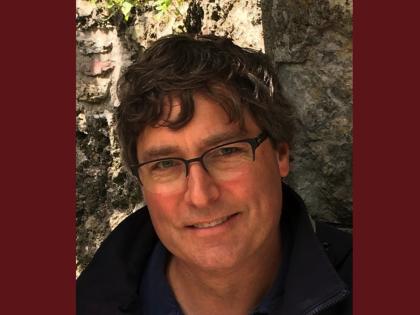Medieval saints handled many tasks for the needy faithful. Saint Apollonia took care of toothaches because the Romans had ripped out her teeth one at a time in an effort to make her renounce Christ. Saint Genevieve, who protected grain against rats and mice, naturally became the patron saint of cats. Saint Wilgefort helped rid women of brutal husbands because when her father tried to marry her off after she had vowed virginity, she prayed for deliverance and in consequence grew a thick beard that revolted the proposed groom.
Saint Fiacre enjoyed a special niche. He was an Irish monk who, like other Irish Christians of his time, went off to the continent to do missionary work among the barbarians. He settled among the Franks near Meaux, not far from Paris, where he told the local bishop, Saint Faro, that he sought silence and solitude.
But Saint Fiacre was no hermit. He wanted to build a monastery, for that is what missionaries did. According to one tale, Saint Faro promised Saint Fiacre all the land he could enclose with a ditch to be dug in one day. Saint Fiacre spent a day using an ivory cane to draw a line in the dirt around a large plot of ground, and the ditch miraculously dug itself. The monastery that he built within this perimeter sheltered him until his death.
His intercession cured diseases, and after his death miracles of healing occurred at the monastery. Pilgrims flocked to it for cures and devotion. The miraculous ditch remained, pointed out with humble pride to visitors and shielding the monks from intrusion by the surrounding world. Women were said to have been excluded from the monastery on pain of divine punishment, sometimes being afflicted with madness if they transgressed. (But here, as so often in medieval lore, stories contradict each other. Women are recorded as coming to the monastery to be healed of afflictions common and bizarre. One woman with a stomach ache was made to vomit out a green snake; another in similar pain disgorged a red worm. A third's daughter was raised from the dead.)
The saint specialized in urology and proctology. Hemorrhoids were called "figs of Saint Fiacre." As late as the seventeenth century, Cardinal Richelieu, who suffered agonies from that malady, made a pilgrimage to beg that the saint's reliquary be opened and the bones applied to his ailment. Afterwards he wanted to take some of the bones with him, presumably to apply when needed to his afflicted parts.
At least one medieval miracle story is recorded of a gentleman from Provence whose membrum genitale was afflicted with a large sore that no physician could heal. After suffering for two years, he went on pilgrimage to the monastery of Saint Fiacre, where a wax replica of the diseased organ was made and pledged in a vow to the saint--whereupon the gentleman was cured and remained so. The wax form may have been burned on the altar as a candle.
The saint was called on to cure worms, fistulas, kidney stones, some forms of cancer, afflictions of the skin, and--later--venereal diseases, especially syphilis. Forty years ago, in his great, multivolume Iconographie de l'art chrétien, Louis Réau mused in apparent chagrin that Saint Fiacre was an anomaly, a popular French saint whose name was seldom bestowed on children. Somehow, given his connection with the nether parts of the human anatomy, this neglect does not seem surprising.
Saint Fiacre remained popular until after the French Revolution. Then his devotion faded, although it has never entirely died. Some pilgrims still make their way to Meaux seeking cures, but Lourdes has long since replaced it in popularity.
For a long time, compilers of saints' lives and their iconography held that Saint Fiacre was the patron of Paris cab drivers--who could use a saint to protect them and their passengers. Alas, even this palm has been lifted from him. Coaches for hire in Paris began to be called fiacres in the seventeenth century. They were tough, high-wheeled vehicles made to navigate muddy streets, and got their name from the Hôtel St. Fiacre, established around 1640. Both Louis Réau and the Bibliotheca Sanctorum ordered compiled by Pope John XXIII denounce as a canard the story that Parisian cabbies claimed the saint as their own.
But one glory still rests on Saint Fiacre's brow. He remains the patron saint of gardeners, especially those who grow vegetables. The vegetables he grew around his monastery were said to be superb. Naturally enough, he has been claimed also by florists and by potters. His image stands solemnly in many a church in Paris, northern and western France, Belgium, and the Netherlands. He always holds a spade at his side, and his effigy is frequently dressed in the coarse clothing and shoes of the peasants in his region. He often seems to be looking at the ground, where he will dig. He is the saint whose aid may be implored in clearing weeds and brush and stones from the garden, and if he does not help with the digging and the heavy lifting, he can at least grant patience and persistence in labor that is never done. He is a saint for lowly things and for increase, and his blessings are welcomed by those who love springtime and planting, summer, and harvest, the smell of turned earth, and the joy of a flowering land.








